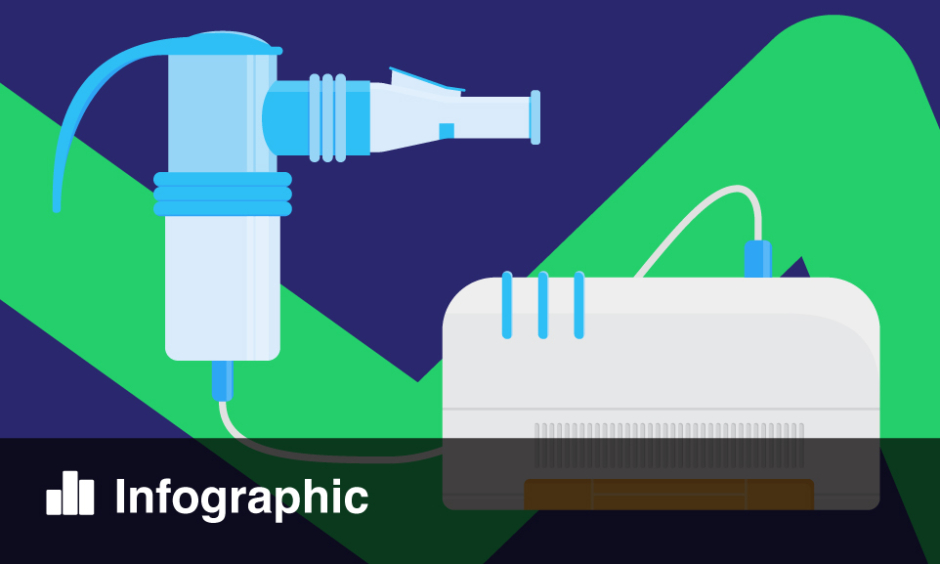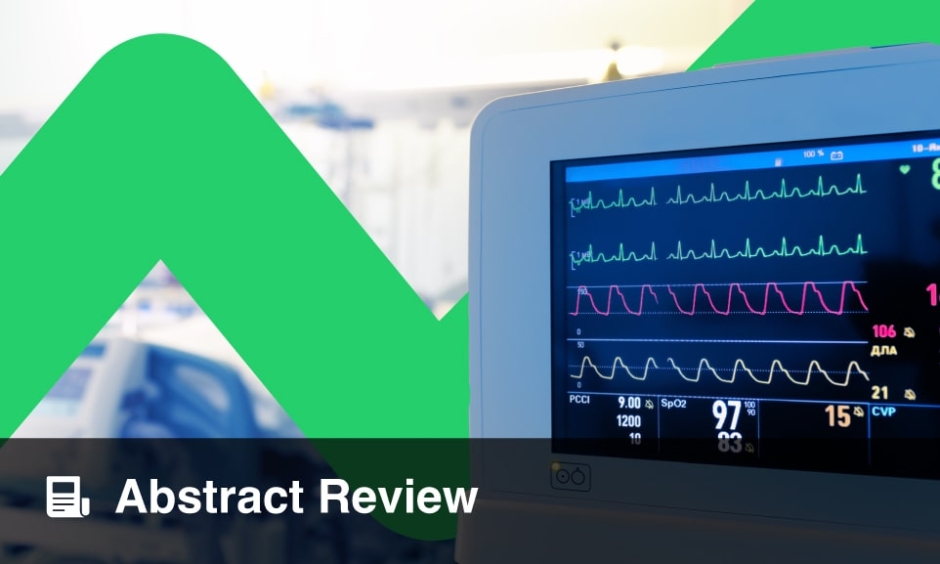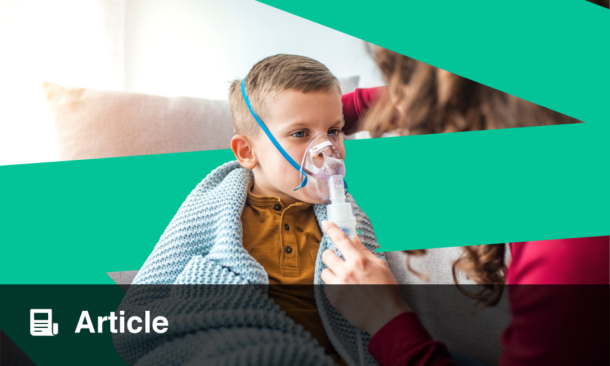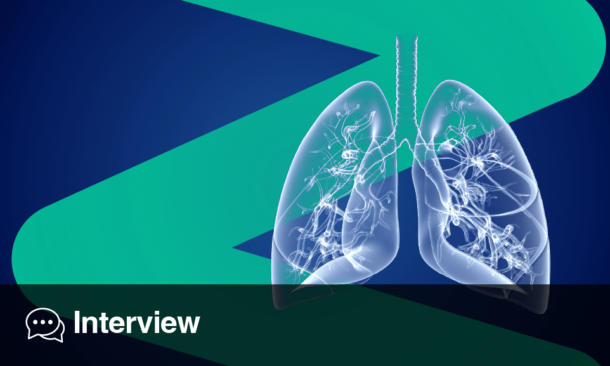Chairperson: Kostas Priftis1
Speakers: Kostas Priftis,1 Bülent Karadag,2 Wim van Aalderen3
1. Third Paediatric Department, National and Kapodistrian University of Athens, Athens, Greece
2. Division of Paediatric Pulmonology, Marmara University, Istanbul, Turkey
3. Department of Paediatric Respiratory Diseases, Amsterdam UMC, Amsterdam, the Netherlands
Disclosure: All speakers received a fee from OMRON Healthcare for speaking at this symposium.
Acknowledgements: Medical writing assistance was provided by Amanda Barrell, Brighton, UK.
Support: The publication of this article was funded by OMRON Healthcare.
Citation: EMJ Respir. 2020;8[1]:44-49.
Meeting Summary
Breath sounds, such as wheeze, may be one of the oldest clinical signs described in the medical dictionary, but their definition and interpretation among clinicians varies widely. Efforts to classify breath sounds have often created further confusion over what does and does not constitute wheeze, a breath sound that can be indicative of asthma, bronchiolitis, and various other air trapping lung diseases in preschool children. There is also a disconnect between parental and physician understanding of wheeze, with high levels of disagreement between the two groups. The result is a failure to recognise or to hyperdiagnose wheeze. This can lead to inappropriate medication use, including over- and underuse, and children undergoing unnecessary testing and procedures, as well as increased levels of anxiety for parents and carers. Crucially, failing to recognise wheeze can delay the detection of asthmatic disorders, blocking access to preventative treatments, and make exacerbation more likely.
During this symposium, Assoc Prof Priftis, Prof Karadag, and Prof van Aalderen discussed the definition of wheeze, what it might mean in preschool children, and the implications of not recognising it. They also talked about the importance of a patient-centred approach to diagnosis, how to ‘close the gap’ between patient and physician understanding, and suggested that new technologies, such as artificial intelligence (AI), may play a role in detecting wheeze.
What Is a Wheeze and Why Is It Important to Confirm It Is a Wheezing Sound?
Associate Professor Doctor Kostas Priftis
In 1819, René Laënnec, inventor of the stethoscope, said that breath sounds were “much more difficult to describe than to distinguish.” Just over 200 years later, the same is still true, said Assoc Prof Priftis.
“Noisy breathing is a very well-known clinical sign used by all physicians, especially paediatricians,” he said. Yet, despite its wide and long-term usage as a clinical sign, interpreting the meaning behind noisy breathing is far from straightforward. Various papers have attempted to assist by classifying and defining breathing sounds in recent years, but there remains much confusion and little standardisation among physicians, Assoc Prof Priftis told the symposium attendees.
Classifications
Bohadana et al.’s1 ‘Fundamentals of Lung Auscultation’, published in 2014, attempted to define and classify breathing sounds in a bid to help clinicians better recognise signs of respiratory disease. It grouped tracheal sound, lung or vesicular sounds, and bronchial breathing together as normal respiratory sounds. The abnormal respiratory sounds were split into subcategories: musical (m), nonmusical (nm), and mixed. Stridor, wheeze, and rhonchus fell into the ‘m’ group, whereas fine crackle, coarse crackle, and pleural friction rub were considered ‘nm’. The authors classified squawk as mixed.
Two years later, Assoc Prof Priftis explained, a European Respiratory Society (ERS) taskforce published a statement that classed a wheeze as an adventitious sound, originating from the chest wall, trachea, or mouth. The authors described it as a continuous, high-pitched respiratory sound. Rhonchus was also defined as being continuous, but low-pitched.2
“A wheeze […] can be heard with or without a stethoscope, especially during expiration, and is produced by the obstruction of airflow within intrathoracic airways,” said Assoc Prof Priftis. “In this way, we can detect asthma, as it is an asthma sign, but it can also be produced by other causes such as bronchiolitis, bronchomalacia, or a foreign body.”
Clinical Importance
Recognising breath sounds is essential to the early diagnosis and appropriate treatment of respiratory health conditions.
However, a 2016 study by ERS taskforce members on lung sounds found that even the experts were unable to agree on the correct classification of prerecorded respiratory noises.3 When the study participants were asked to choose between 10 predefined breath sounds according to the recommended English language nomenclature, there was little agreement between them. When the field was reduced to four breathing sounds, namely expiratory crackle, inspiratory crackle, expiratory wheeze, and inspiratory wheeze, the specialists were slightly more in agreement. However, it was only when the experts were asked to classify the sounds as simply either a crackle or a wheeze that they achieved a ‘good’ or ‘excellent’ level of agreement. Simplifying the description of lung sounds would, Assoc Prof Priftis argued, help to increase agreement on their use. “It seems the essence of our clinical practice is to confirm a breath sound as a crackle or a wheeze,” said Assoc Prof Priftis, highlighting a 1979 paper that described just two types of breath sounds, discontinuous and continuous, with wheeze falling into the latter.4
The ERS taskforce also sought to understand if there were common terms for the different breathing sounds. They found huge variation across countries and, in some cases, within countries regarding the word they used to describe ‘wheezing’.3 “Again, it was a mess, because even in the same country we had different names for the same sound,” said Assoc Prof Priftis. If doctors have difficulty naming and recognising breath sounds, how could they explain how to interpret them to patients and their parents, he questioned.
Objective Recognition and Description
An objective description of wheeze would inform more universal recognition of the breath sound that can be indicative of health conditions such as asthma and bronchiolitis, both of which benefit from early detection and treatment, considered Assoc Prof Priftis. Crackles and wheezes, he argued, are well recognised and routinely used in daily practice, meaning that no further classification is required. Further descriptions would serve to introduce confusion and nonstandardisation. “Enough is enough, we need no more,” he said.
Assoc Prof Priftis concluded: “After 200 years of stethoscope usage, it is still more difficult to describe than to distinguish breath sounds.”
The Struggle of Paediatricians and Parents with a Wheezing Child
Professor Doctor Bülent Karadag
For all the reasons highlighted by Assoc Prof Priftis, said Prof Karadag, recognising wheezing in a child can be challenging. In addition, this is often compounded by a lack of agreement between healthcare professionals and families on whether the symptom is present and, if it is, what it means. It is important to remember that not every wheeze a parent reports will match the clinical description, and that not every confirmed wheeze is caused by asthma, clarified Prof Karadag.
Prof Karadag started his presentation with a list of reasons why it was important to recognise wheeze. “Now we are moving into autumn and winter, our emergency rooms will be full of wheezing children with bronchiolitis and asthma,” he said, explaining that wheeze was the “most important tool” for diagnosing asthma. “In order to get appropriate medical treatment, you should diagnose wheezing. Otherwise, you will not be giving inhaled steroids or leukotriene receptor antagonists to treat and to control asthma,” he warned. Recognising wheeze and its causes, he explained, also helps clinicians to avoid inappropriate antibiotics and unnecessary laboratory testing.
Crucially, recognising wheeze is an integral part of patient-centred care, he continued. Clinicians can decrease children’s and parents’ anxiety levels by identifying and explaining the breathing sound, he said. To demonstrate his point, Prof Karadag highlighted a UK study of parents of preschool children with recurrent wheeze. It found a mix of positive and negative feelings about healthcare services among those whose wheezing toddlers were being cared for in primary care, emergency departments, paediatric wards, and paediatric specialist clinics. Following discharge, however, parents only reported feelings of stress, fear, or anger relating to their child’s care.5 Prof Karadag explained: “When they are at home there are no happy moments because there is uncertainty. Is it wheeze? Is there any severe disease? Should I take my child to the emergency room? But even in the emergency room and paediatric ward, if the diagnosis is not clear, if the physician cannot say it is wheezing, this fear and anger continues.”
Discrepancy in Understanding
Prof Karadag said that there was a significant discrepancy between parental and physician understanding of wheeze.
One of the first papers to demonstrate this was published 20 years ago and showed that parents and doctors only agreed in 45% of cases.6 In 39% of cases, doctors defined a child’s breathing sound as wheezing, though it had not been described as such by the parents. Additionally, in 14% of cases the parents said it was a wheeze, but the doctor disagreed. A key point here is the differing terminology for wheeze, as outlined by Assoc Prof Priftis, Prof Karadag said. When parents were asked to describe their child’s breathing sound, they used a multitude of words, including hissing, squeaking, whistle, and rasp.6 “Doctors do not know what to label it, but from the patient/parent side, it is terrible. In Turkey, I can never be sure of what they will call it, so I always ask them to mimic the sound, but it is not accurate.”
Another study, from 1996, showed that the easier it is to hear the wheezing, the higher the level of agreement between parent and doctor.7 “When you look at the peak expiratory flow rates, if you hear the wheezing easily, flow rate is something around 55%, and if there is no sound, it is about 90%. So, if the parents are hearing wheezing at home easily, you should ask them to rush directly to the emergency room because there may be a risk of hypoxia.”
Other factors that might affect parental understanding, interpretation, and terminology surrounding wheeze are ethnicity and socioeconomic background. A UK study of 4,000 patients showed that parents from a South Asian background and those who did not speak English as a first language were less likely to correctly define wheeze compared to Caucasian, native speakers, for example.8
Agreement matters because there is a link between parent-reported wheezing and general practitioner-recorded asthma diagnosis, according to a 2018 study from Wales, UK.9 “If the parents report true wheeze, true positive wheeze, asthma prevalence is nearly 20%. But if there is a false positive wheeze it is 4%.10 So, if there is an agreement between the physician and the parents, you can say that the risk of asthma is much higher than in the normal population,” stated Prof Karadag.
Summarising the problem, he said: “Identifying wheezing is challenging for parents. Children may not be able to, and of course we don’t expect them to, articulate their breathing trouble.” Wheeze does not always sound the same, and it can be confused with noisy breathing, congestion, a blocked nose, or even a throat infection.
Not Every Wheeze Is Asthma
Recognising wheeze is the first step on a diagnostic journey, but the destination is not always asthma. Clinicians need to ask if the sound is a wheeze or a rattle, and consider any additional findings, including whether the noise is localised. They should also be aware of the risk of bronchial disease, said Prof Karadag. “There are two parts to this: is it really wheezing and is there any underlying disease?” he asked. In acute bronchiolitis, which is more common than asthma, clinicians will hear polyphonic wheeze and inspiratory crackles. Children with acute bronchitis may present with an audible rattle, caused by secretions, which it is also a symptom of acute viral bronchiolitis. Detecting asthma, therefore, is not as straightforward as recognising wheeze. Wheeze at rest and nocturnal cough are indicators of asthma, said Prof Karadag.
He continued: “In conclusion, many cultures do not have a word for wheeze, and nearly half of parents struggle to identify wheezing sounds. Doctors fear patients will be undertreated due to the lack of awareness around wheezing. The ‘wait-and-see’ approach may cause delayed interventions to prevent attacks, and if physicians hesitate, they will miss any underlying diagnosis, mainly pneumonia. My take-home message is that it is important to clarify the sound heard by the parents, and even the sound heard by doctors. We need to standardise it and AI may help us to overcome this barrier.”
New Tool to Help Parents Confirm Wheeze
Professor Doctor Wim van Aalderen
AI may play a role in helping parents and physicians detect wheeze in children. Devices such as the OMRON WheezeScan (HWZ-1000T-E; OMRON Healthcare, Kyoto, Japan), which has been recently been launched as an aid for parents in the UK and Germany, use a validated algorithm to listen to auscultation and return a ‘wheeze’ or ‘no wheeze’ result. The value of such tools, which currently allow parents to confirm their suspicions of wheeze in children aged between 4 months and 7 years old, lies in their potential to assist in the early diagnosis of asthma and other respiratory conditions, said Prof van Aalderen, highlighting that preschool wheeze costs the UK £53 million a year, or 0.15% of country’s overall health budget.11
Prevalence and Interpretation
Discussing the impact of wheeze, he said that one in three children experience it before their 3rd birthday, adding that the cumulative prevalence is 50% by the age of 6 years. A well-known study from 1995 found that 40% of those who had a wheezing episode before the age of 3 years, and most of those who persistently wheezed before turning 6 years of age, went on to be diagnosed with asthma.12 “This is a very important study, but […] it doesn’t help you if you are in your office with a wheezing child in front of you. It doesn’t give a clue about the future of the wheeze of this child,” remarked Prof van Aalderen.
Of course, asthma is not the only cause of wheeze. Recurrent viral upper airway infections and cigarette smoke exposure can cause the breathing sound, and postviral wheeze is common in young children, especially in those recovering from respiratory syncytial virus. Prof van Aalderen also listed several rare diseases as possible differential diagnoses of preschool wheezing. These included cystic fibrosis, congenital heart disease, and anatomic malformation, such as tracheomalacia.
He reiterated the point made by both Assoc Prof Priftis and Prof Karadag, that wheeze can be interpreted differently between parent/carer and healthcare provider and is dependent upon whether it is reported retrospectively or in real time. “For us, what is important is the agreement between parents and healthcare providers,” he said, pointing to a 2000 study showing these two groups disagreed on their assessment of wheezing in 55% of cases.6 The importance of this was highlighted in a paper published in 2004, which found the lung function in children with physician-confirmed wheeze was significantly lower than that in children with parental-only reported wheeze.13
Predictors of Asthma
Detecting wheeze is an important first step in the diagnostic journey, but it is not the only predictor of asthma. Clinicians with a confirmed incidence of wheeze will carry out a physical examination and take a thorough history, paying particular attention to any family history of asthma or allergies. Noninvasive measurements such as exhaled nitric oxide and serum markers, especially IgE if there is a history of allergic disease, may also be useful, explained Prof van Aalderen. “History, a positive family history for allergic disease in the first-line, and a positive specific IgE all increase the chance of developing asthma, but there is overlap between groups and there is no diagnostic available for daily practice,” he said.
Artificially Detecting Wheeze
New technologies may help parents to identify wheeze, and lead to greater agreement between them and physicians. WheezeScan, for example, connects to an app that allows parents to share information with doctors. They do not, however, change the role of the clinician: “If a parent reports to you that their child has wheeze, you still have to do a full follow-up in your own office. It helps with diagnosis, but your job as a doctor remains the same as it was yesterday,” explained Prof van Aalderen.
Questions and Answers
Following the presentations, the panel answered questions from delegates and from each other.
Q: Should We Teach Parents What Wheeze Is?
Assoc Prof Priftis said parents would simply need to know if a child were wheezing or not so they could relay that information to their doctor. It is then the clinician’s role to differentiate what the wheeze means through the history and examination.
Q: How Can We Close the Gap Between Parent and Physician Understanding of Wheeze?
Prof Karadag said we were “at the start of a new era in terms of closing the gap.” This is being driven in part by new technologies, such as AI, but also by a new emphasis on personalised care. “Being a good physician and making the right decisions depends on the time you are spending with your patient,” he said. Factors such as the parent’s education and occupation, whether the child is their first, and how old they were when they became a parent, for example, all have a bearing on their interpretation of a wheeze and its severity, he observed. “I think giving enough time to each patient and taking a detailed history will help physicians to close this gap.”
The essential point, said Assoc Prof Priftis, is to educate doctors so they can educate their patients.








